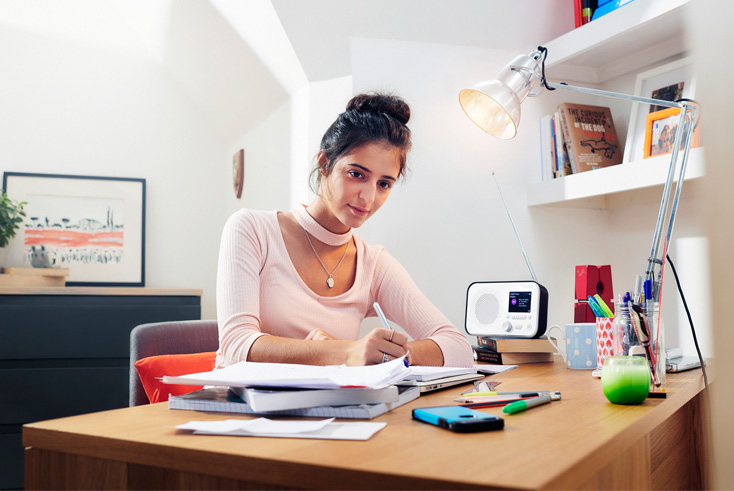Vote for radio with your heart and head

Partner content
Radiocentre’s planning director Mark Barber explains the significance of a new Ebiquity study, which reveals which media are most valuable for building brands during uncertain times
Things are looking up. Next year is shaping up to be a vast improvement on 2020. With the roll out of the Covid-19 vaccination programme underway, there is real prospect of putting the pandemic behind us.
A positive year ahead for radio
This will be a good opportunity for advertisers to make up for lost ground and invest in advertising to ensure their brands bounce back. Commercial radio is set to be one of the biggest beneficiaries as brands emerge from this year of economic gloom, according to new research by Ebiquity.
Re-evaluating Media for Recovery shows advertisers are planning a big increase in spend on commercial radio during 2021, as radio is classified as one of the best performing media to help brands recover from a recession.
More than a third of advertisers (34%) are planning to increase investment in radio in 2021 versus pre-Covid 2020 budgets, the highest rise of any traditional medium.
This is partly fuelled by a growing understanding among advertisers of the powerful role radio plays in fuelling brand growth. Ebiquity’s study, commissioned by us at Radiocentre, aims to help advertisers understand which media are most valuable for building brands during uncertain times.
The research explores marketers’ perceptions about the performance of different media and compares them with publicly available evidence. The study is a follow up to Ebiquity’s in-depth 2018 report Re-evaluating Media, which looked at the most effective media for long-term brand building.
Radio is the second most valuable medium for growing brands during uncertain times
The new study shows that radio continues to be second most effective advertising medium after TV, according to an analysis of published evidence.
It also shows that advertisers’ perceptions of radio have improved markedly since 2018. They now rank radio as the third most effective medium, behind TV and online video, up from sixth ranking in 2018.
OK, perceptions haven’t yet totally caught up with the evidence – which places radio second – but Ebiquity found that there have been significant gains for certain attributes, for instance targeting the right people in the right place at the right time and building brand salience.
Radio’s improving profile as an advertising medium can only have been boosted by the role it has played during the pandemic. Radio listening surged throughout the initial lockdown as workers have spent more time at home.
In November, more than a third of listeners claimed to be tuning in for an extra hour and 53 minutes each day compared to the period before the March lockdown, according to research by DRG commissioned by Radiocentre.
One view is that, having been part of people’s daily media routines for so long, this additional listening may well become an established habit and carry on beyond the pandemic with the predicted shift towards greater homeworking post-Covid.
This means advertisers will continue to have access to this increase in high value mass audiences radio has been delivering for the majority of this year.
Radio continues to dominate and thrive within the new audio landscape
Other factors are boosting radio’s standing among advertisers, with more big name celebrities hosting radio shows, the launch of several high profile specialist stations and the general buzz surrounding the growth of audio listening with podcasts, audio books and music streaming.
But if you carry the misconception that this growth in other digital audio services comes at the expense of commercial radio’s audiences, you are not alone. You might be wrong, but you are not alone.
The Ebiquity research shows that advertisers carry some big misconceptions about the amount of time listeners spend with commercial audio channels compared to radio.
Advertisers and agencies believe that listeners spend 58% of commercial audio time listening to radio, 26% with on-demand music and 16% of the time with non-BBC podcasts.
The reality is quite different. According to the RAJAR-MIDAS survey live radio listening accounts for 83% of commercial listening time with on-demand music accounting for 9% and podcasts for 8%.
What next?
As Thinkbox and Newsworks studies have shown in the past, people working in advertising and marketing have very different media consumption patterns – adopting new media a lot more quickly/for more hours – compared to the wider public.
Plus, we are exposed via the online trade titles to a constant blizzard of new news about developments in technology-led media. In combination, it’s natural that these would prompt us to instinctively favour digital media when it comes to planning/buying media – we are human after all!
So, if like me, you occasionally find yourself thinking like John Cusack’s character in the film High Fidelity (“I’ve been thinking with my gut since I was fourteen years old, and frankly speaking, between you and me, I have come to the conclusion that my guts have shit for brains”), what can you do about it?
The most important thing to do is STOP and engage your system 2 brain to interrogate your system 1 decisions. It’s convenient that this report provides an easy one-stop-shop summary of all of the available research exploring the effectiveness of different media across a range of attributes.
These findings are important as brands look ahead and attempt to successfully market their way out of the economic recession. Having an accurate perception of the reality of how different media are consumed and what the evidence tells us about how impactful they are, is vital in creating an effective media plan.
Re-evaluating Media for Recovery shows that you can choose radio confidently with both head and heart. And if you do, it will prove its worth, in line with its status as the second most powerful medium after TV.
Download the full ‘Re-evaluating Media for Recovery’ report for free here.
Mark Barber is planning director of Radiocentre



